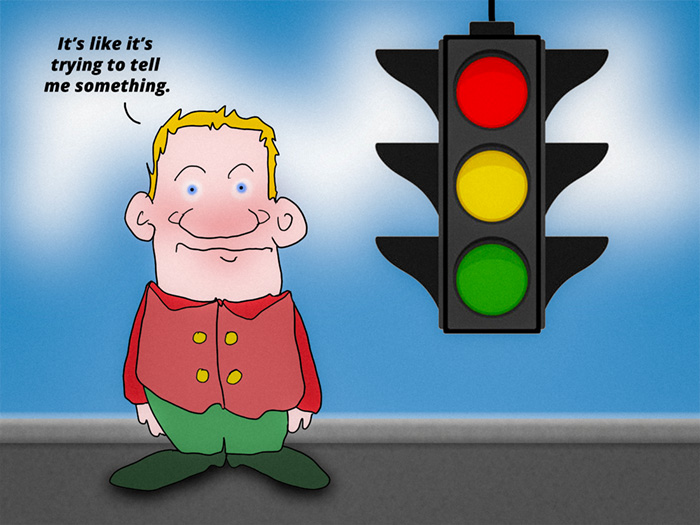Sometimes they are obvious. Signals. I might give you a thumbs up to let you know that I like something. Or perhaps someone fires a gun to start a race. On other occasions, they might be subtle. A wink from a friend to let you in on the inside joke.
Those signals. We need them in life.
They are gestures or actions. Sometimes they are sounds. Signals are used to convey information or instructions. We often need them for clarity and understanding. They come in a multitude of forms.
Signals are on my mind because on today’s date, December 9, 1868, the first traffic lights were installed outside the Palace of Westminster in London. Yes. Those first traffic lights were for buggies, carts, horses, and such.
The first traffic lights resembled railway signals. They use semaphore arms. And, at night time, they were illuminated by red and green gas lamps.
Today, the same three colors are used globally to signal our traffic endeavors. You know. Red means stop. Green, go. And yellow means speed up as fast as you can to get through the light.
Okay, okay. Yellow means caution. But many throw it to the wind.
Back to that first traffic light. The system didn’t work out so well in London. It displayed two signs attached to pivoting arms. A lever manipulated those arms. At the top of the post was a gas-lit semaphore. This was to ensure visibility. But within two months, the traffic light exploded. It killed the police officer who worked the signs.
So, people weren’t too keen on doing this again. It would take another 46 years for the next workable traffic light. It all hinged around the advent of electricity.
As they say. Let there be light. The first dual-colored traffic light, which used this brand-new technology called electricity, was installed in Cleveland, Ohio. Red and green. This was on August 5, 1914, at the corner of 105th and Euclid Avenue.
Detroit and New York added yellow between the red and green in 1920. They became the traffic lights that we now know today. And now, the norm throughout the world.
So, not only do we need signals for traffic, we rely on them in many other aspects of our lives. The little ding on the microwave lets us know our chicken pot pie is piping hot. An Amber Alert warns us of a missing child. Our phones play the Darth Vader melody to tell us our mother-in-law is calling.
But our human selves utilize signals too. We use them to interact with each other. Most of us do this seamlessly, smoothly, and without much thought or effort.
Social signals. They are the basis of this highly effective communication. Again, they come in many forms, such as speech utterances, body movements such as gestures, and manipulations of objects. Or combinations of these. Some of us are better at giving signals than others.
No matter the what, the where, the why, or the who, we all use signals to move through our days. We need only to pay attention to keep from bumping into anything. Or anyone.
=====
“A wonderful fact to reflect upon, that every human creature is constituted to be that profound secret and mystery to every other.”
― Charles Dickens, A Tale of Two Cities
======
“The single biggest problem in communication is the illusion that it has taken place.”
― George Bernard Shaw
=====
“Constantly talking isn’t necessarily communicating.”
― Charlie Kaufman
=====
Signal me this.
